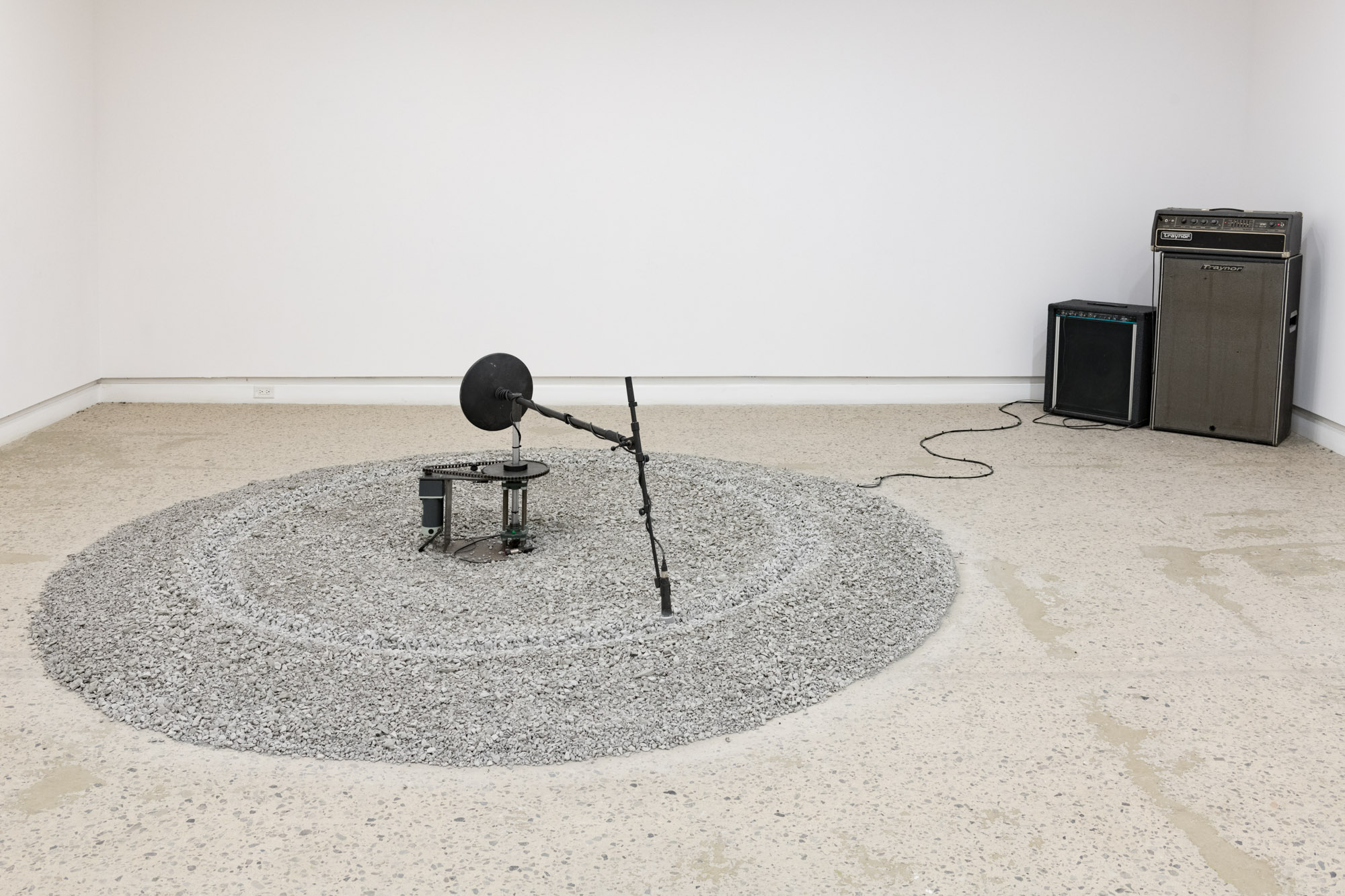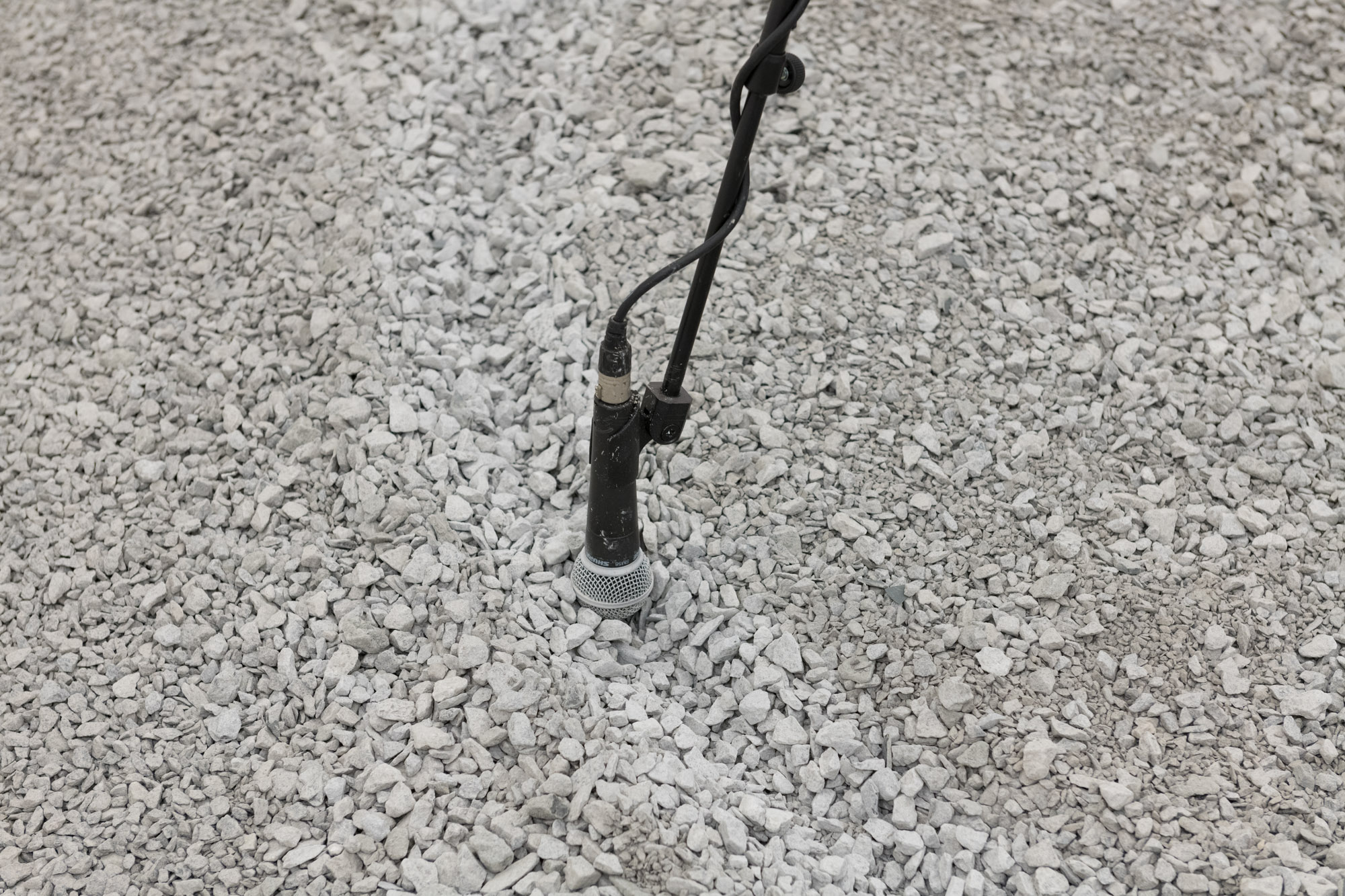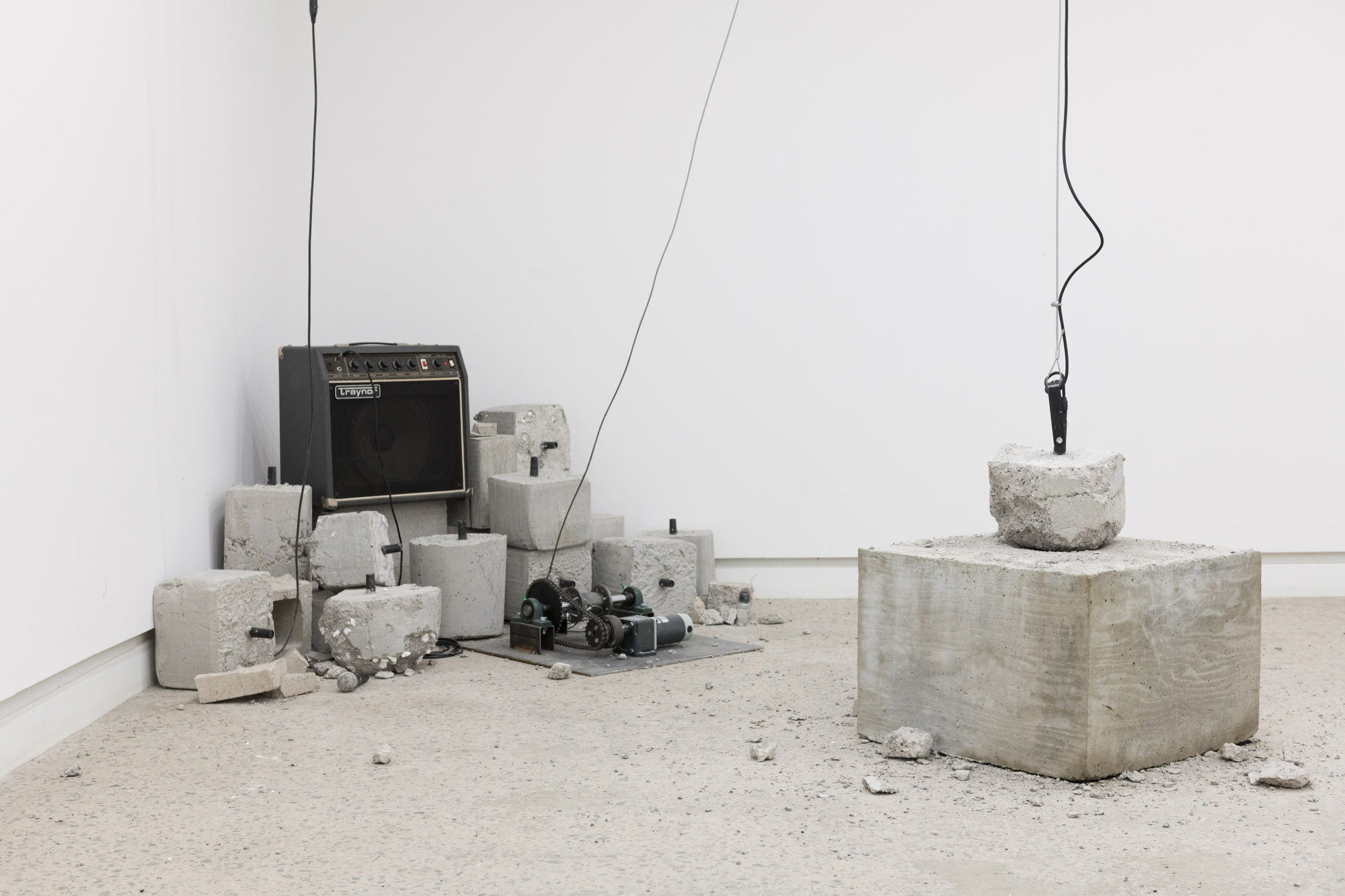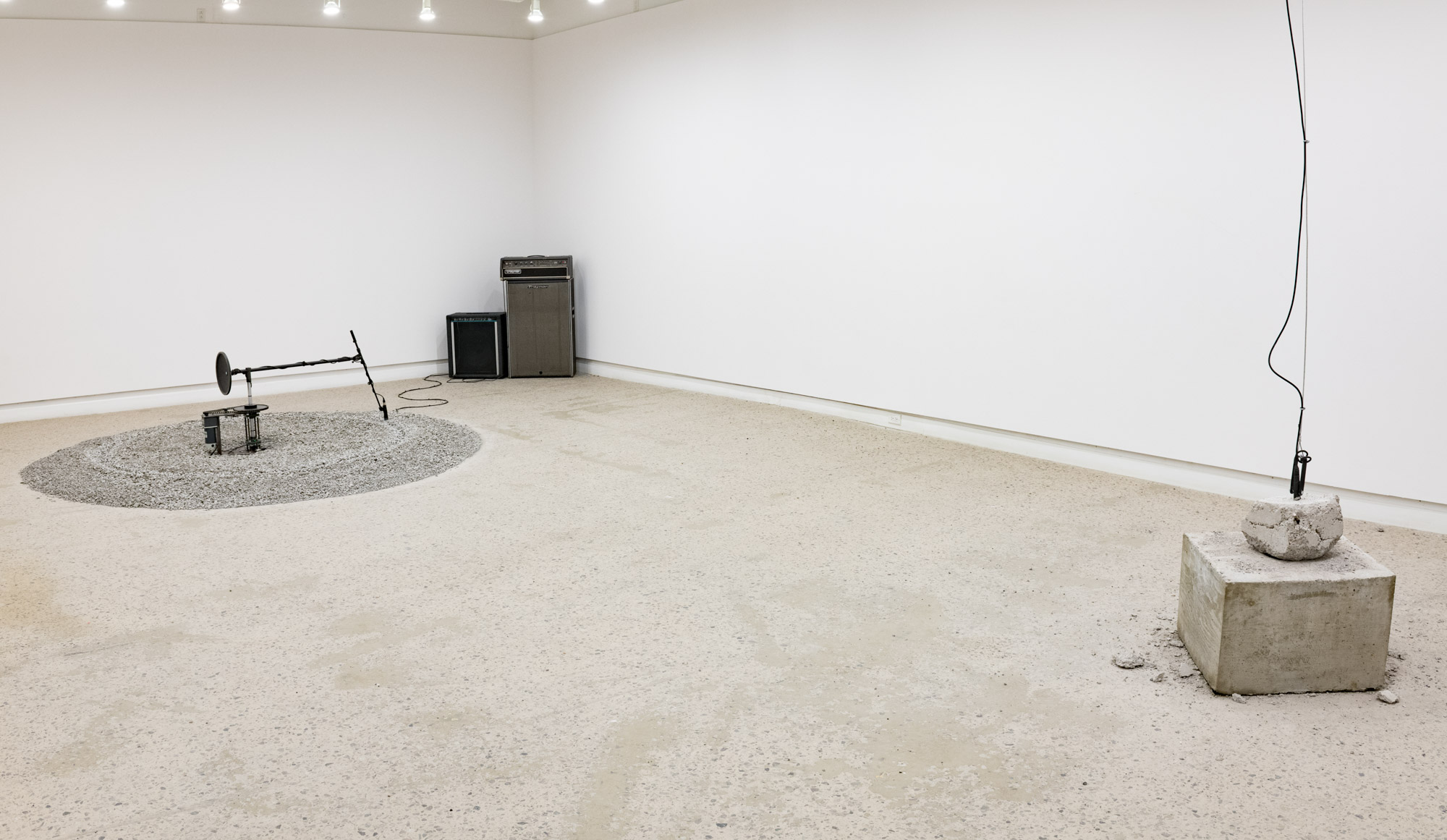A Large Inscription, A Great Noise
Mixed-media installation. 2019.
Variable dimensions. Microphones, mic stand, amplifiers, gravel, cement, cable, steel, motor, electronics.
"A Large Inscription, A Great Noise" investigates notions of historical time and time-keeping, cycles of construction and destruction in an era of mass communication, automization through mechanical kineticism, and the modalities of its resulting trace.
In "A Large Inscription", a microphone stand is dragged over a field of gravel; an indispensable instrument of the modern demagogue is knocked over like an overrun statue. Rotating slowly, it leaves behind an evolving elegant trace with no beginning or end.
In contrast to this continuous gesture, "A Great Noise" punctuates the passage of time with a Sisyphean physicality: a microphone encased in a cement block is lifted and dropped, slamming against a larger base. Like mechanically-operated durational performance art, the visceral force evokes tension of the microphone’s inevitable fate, whether that means succumbing to a violent end or breaking free of its shackles.
Exhibition Text:
The philosopher Edmund Husserl spoke of two basic modalities of time, fixed and flowing, and turned to melody to illustrate their knitting-together. For him, the experience of unified time involved retaining the immediately preceding—what just happened—in such a way as to anticipate what was yet to come. It is on these terms that Adam Basanta’s latest works invite us to contemplate an impasse in our time-consciousness.
The philosopher Edmund Husserl spoke of two basic modalities of time, fixed and flowing, and turned to melody to illustrate their knitting-together. For him, the experience of unified time involved retaining the immediately preceding—what just happened—in such a way as to anticipate what was yet to come. It is on these terms that Adam Basanta’s latest works invite us to contemplate an impasse in our time-consciousness.
What happens to time’s succession, and our self-awareness as lived through it, once we find ourselves totally habituated to coordinated universal time? What happens when, in spite of cultural differences that variegate time’s experience, we objectify our lives so thoroughly as to be paralyzed from imagining any shared anticipation of the future? Updating Husserl, the philosopher Bernard Stiegler diagnoses the problem as one of hypersynchronization. As all of us punctuate our days with constant injunctions to communicate, to ‘have our say’ no matter how mundane, Basanta’s pieces index a fraught moment in our modern relationship to time, even as they evoke certain ancient pathologies around time’s accomplishment.
Exiting city streets caught up in a seemingly never-ending cycle of destruction and reconstruction, we come upon their elementary machine choreographies. We see the futility of Sisyphus, as a microphone is cyclically dragged over gravel, experiencing its amplification through the indifferent temporal encounter of non-living matter. We hear the Golem of Chełm at work in an encased, pile-driving microphone, its assemblage fruitlessly but efficiently performing whatever difference between noise and sound. Taken together, we may also see these gestures less as mutually-ensnared loops than resonant or vibratory structures, suggesting something more opportune: the passage of time as movement. As Husserl insisted in his schema, “…when the concrete present is at an end, a concrete, flowing retentional past must be joined on.”
Text by Neal Thomas.
"A Large Inscription, A Great Noise" was made possible by financial support from the Canada Council for the Arts.




photos by Paul Litherand.